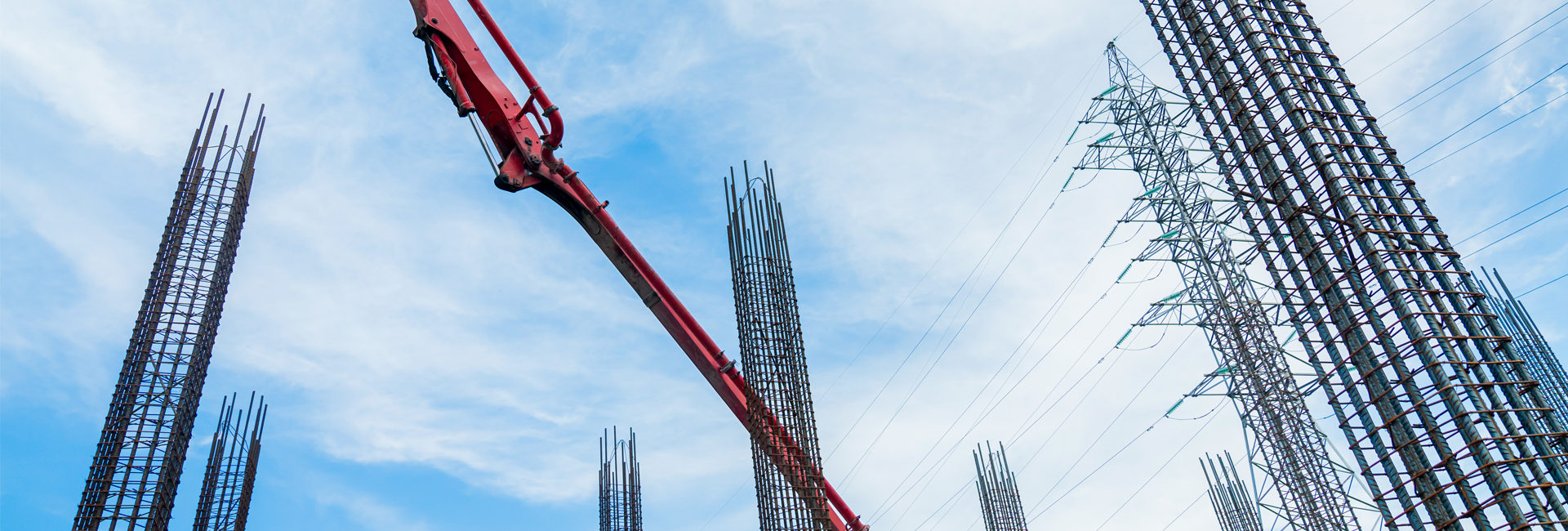For years now, our team at Sree Metaliks Limited has been constructing building materials that can stand against time and withstand natural disasters like earthquakes with ease. Earthquakes are one of the most destructive natural phenomenon as their seismic waves can destroy buildings and cause tremendous losses.
The worst part is that you never know when it is going to hit you. The higher the magnitude count, the more destructive the results. Therefore, staying prepared and building earthquake-proof houses from the start is always a good call. We manufacture all the essential construction materials, which will protect your dream property from earthquakes and the destruction that comes with them.
If you go up to your terrace and look around, you will notice something you wouldn’t have even five years ago. That something is the multitudes of high-rise buildings scattered across cities. These structures make up a large part of the infrastructure in most cities today. From high-rise apartments, towering malls, factories to large office complexes, all these buildings are making use of shrinking urban spaces by growing higher and higher. While looking at them, you may also wonder what it is that keeps these buildings afloat. After all, the higher the structure, the higher the safety risks and hazards. These hazards are mitigated with the aid of TMT bars. These bars are made of steel and display high levels of strength and agility to withstand high amounts of tension and load.
|
Table of Content
|
How Frequent are Earthquakes?
There are thousands of earthquakes recorded every day all over the world but the majority are too tiny to be felt. Every year there are hundreds of moderate to strong earthquakes with a Richter scale value of 4.0 or higher. Although they are less frequent, major earthquakes with a magnitude greater than 7.0 can cause significant damage. Seismic hotspots such as the Ring of Fire experience the highest activity though the frequency varies by region. Earthquakes are mainly caused by tectonic plate movements which increases the likelihood of frequent tremors in some places. Improvements in seismic monitoring make it easier to follow and comprehend these natural occurrences.
What are the Ways for Creating an Earthquake-Resistant Building?
Before knowing the ways to construct earthquake resistant building, you must know what is earthquake resistant building.Using reinforced structures, shock absorbers and flexible foundations to withstand seismic forces are all part of building earthquake proof buildings. Stability is improved by shear walls, cross bracing and lightweight materials. While energy-dissipating devices absorb shockwaves, base isolators lessen ground impact. Durability is ensured by excellent earthquake resistant materials, careful adherence to building codes and proper structural design. Frequent inspections and maintenance reduce possible damage by strengthening the building's resistance to earthquakes. Below are 5 ways to make a building earthquake proof.
1. Look for a flexible foundation:
You can resist the ground forces by lifting the foundation of the building. So, focusing on premium vase isolation is mandatory. For that, you need to construct your building on top of some flexible pads made using lead, rubber and steel. Contact us for those flexible pads right now!
When the base moves during natural quakes, the isolators will vibrate, but the structure remains steady. This method can absorb seismic waves and prevent them from moving towards the building.
2. Using proficient iron ore pellets:
Pellets are mainly known as smaller iron ore balls, produced with better tumbler index from the iron ore fines.
- These are used as a proper substitute for lump ore for producing sponge iron. It is also used for manufacturing in-blast furnaces.
- Sometimes, pellets are used for producing steel, used to construct household appliances, bridges and more.
- Stronger pellets will make your building strong and prevent them from tumbling down when an earthquake hits the ground.
Being one of the leading iron ore pellets manufacturers, you can expect higher graded pellets from our side.
3. Using shock absorbers:
Much like cars having shock absorbers, building engineers are using these items for manufacturing earthquake-resistant buildings. The main purpose of these absorbers is to reduce shockwave’s magnitude and help the buildings to slow down.
By dissipating seismic energy shock absorbers help buildings avoid structural damage in the event of an earthquake. Placed between a building's foundation and structure these absorbers which are frequently composed of rubber fluid dampers or spring mechanisms absorb vibrations. They improve stability and safety by reducing movement which lowers the chance of collapse or significant damage and guarantees that buildings can sustain strong tremors.
4. Shielding buildings from vibrations:
We are now working on concentric plastic and concrete rings, which are buried around 3 feet under the building’s foundation. When seismic waves hit the ring, they are forced to move through outer rings for easy travel. So, the waves are channelled away from the building and dissipated into ground plates.
5. A Drainage Mechanism
To avoid water buildup and structural damage in roads, buildings and landscapes a drainage mechanism is necessary. It incorporates techniques for effectively diverting water away such as slope-grading subterranean pipes and surface drains. Flooding erosion and foundation deterioration are all avoided with proper drainage. Water flow is improved by materials such as concrete channels, gravel and perforated pipes. Function is guaranteed by routine maintenance which also keeps spaces safe and dry. Efficient drainage systems are essential for construction agriculture and urban planning because they shield infrastructure from long-term water-related harm.
Building a Safer Future: Strengthening Structures Against Earthquakes
Earthquake resistant construction that use premium materials and cutting-edge engineering methods are essential to creating a safer future. The use of flexible foundations reinforced designs and shock absorbers greatly lowers damage and improves safety. Further enhancing resilience are creative technologies, frequent1z inspections and strict adherence to building codes. Long-term safety can be ensured by putting structural integrity and disaster preparedness first to save lives and infrastructure. To create a safe and sustainable environment for future generations we must invest in earthquake-resistant construction today.
Pay attention to these five suggestions to make your building earthquake-resistant. Do not forget to contact us if you would like to acquire high-quality building supplies. Give us a call at 18002021355 to learn more!
Also read: Top 5 iron ore products in India
For more information, please reach out to us at: Sales@sreemetaliks.com

